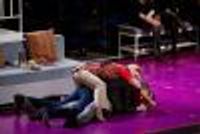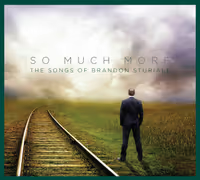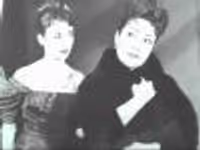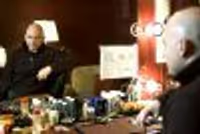Associate Conductor question
#1Associate Conductor question
Posted: 9/18/11 at 8:34pm
Question: Last night when I saw "Follies", the very competent and talented Marvin Laird was on as conductor as opposed to the 'regular' conductor, James Moore. (Laird is typically associate conductor/pit pianist).
Do associate conductors have set performances that they conduct, and the principal conductor gets a night off? Or do they just fill in if the conductor has a conflict or calls in sick?
And what does the 'Assistant Conductor' do? How is that different than the associate or normal conductor? (in this case, he is a trombone player).
Also -- complete side note -- when I looked down into the pit at intermission, the harp and percussion (tympani, mallets, etc.) were nowhere to be found. Do they play in another room and then are piped in? It looked to me that there were chairs enough for all the other musicians but there were only a handfull of people in there so it was hard to tell.
Updated On: 9/18/11 at 08:34 PM
#2Associate Conductor question
Posted: 9/18/11 at 9:19pm
Don't know about Follies, but generally, it's usually the strings that go first. And if they don't, it's usually the percussion which is played on keyboards.
The last time I saw an actual harpist in a pit orchestra was at a fabulous regional production of A Chorus Line back in 1999. The harp is almost always electronically generated nowadays.
ravnquest1
Stand-by Joined: 7/8/09
#3Associate Conductor question
Posted: 9/18/11 at 9:51pm
By contract, musicians on Broadway do not have to show up to all performances, and this applies to the conductor as well. So yes, the associate conductor will "take over" when the main conductor is out, but they don't necessarily know in advance when they will be conducting. The assistant conductor is probably the assistant musical director, though I could be entirely wrong.
It is likely that the percussion was piped in from another room, as percussion instruments typically take up a HUGE amount of space.
#4Associate Conductor question
Posted: 9/18/11 at 11:08pm
Just to elaborate on the responses so far, yes, union musicians are allowed to "call out" up to 50% of the time and still keep "their chair", i.e. their job. That includes conductors; maybe James had something planned and knew about it weeks in advance, and maybe something suddenly came up and he had to call out that afternoon. That's why, just like with understudies, all the musicians and the conductors have a list of people who know the book already and who are ready to play at a moment's notice, in case something comes up and they have to call out. That's pretty much how you break into the business of being a Broadway musician; if you can get on someone's sub list, it's a great way to launch your career, assuming you go in there and do a good job. ![]()
Also, I just want to point out that four currently-running shows have a live harp: Follies, How to Succeed in Business, Phantom of the Opera, and Wicked. Not bad, considering there are only 17 or so musicals running right now!
#5Associate Conductor question
Posted: 9/18/11 at 11:21pm
I would imagine this is a live harp. I've seen shows where they list "harp" in the playbill but it's actually a keyboard.
and thanks for clearing up the conductor question
#6Associate Conductor question
Posted: 9/18/11 at 11:23pm
"union musicians are allowed to "call out" up to 50% of the time and still keep "their chair""
So does this mean that, hypothetically, a musician could be playing for 2 currently-running shows at once? (ie, could do half the performances of one show and half of another?) Or are there union rules against that?
#7Associate Conductor question
Posted: 9/19/11 at 12:26am
No, there are rules against that. You can *sub* for more than one show at a time, but if you "own a chair" at a certain Broadway show, you're not allowed to play (either as a sub or a permanent band member) at another Broadway (or Off-Broadway, I believe) show.
And yes, just so we're clear on what I'm saying, there is a real harp being played at those four shows I mentioned, not a harp on a keyboard. It's probably too tall to fit in the pit so he or she is in another room.
#8Associate Conductor question
Posted: 9/19/11 at 5:31amRegarding percussion instruments being housed in an adjacent room, rather than in the pit, and the sound being piped into the orchestral mix: long before such goings on were the norm, I can remember seeing the OBC of WEST SIDE STORY at the Winter Garden in 1958 and noticing that the timpani were situated in the orchestra level boxes. Back then, orchestras were heard live, unamplified. Those were, to me, the good old days.
#9Associate Conductor question
Posted: 9/20/11 at 12:08pmAdditionally, once the run of a show begins the conductor will often sit in the house and listen to the show so he/she knows how things sound from further away and the assistant/associate conductor will conduct the show.
Videos







